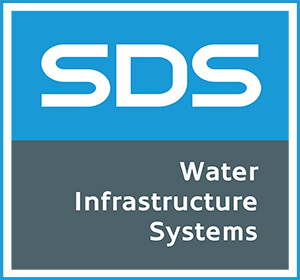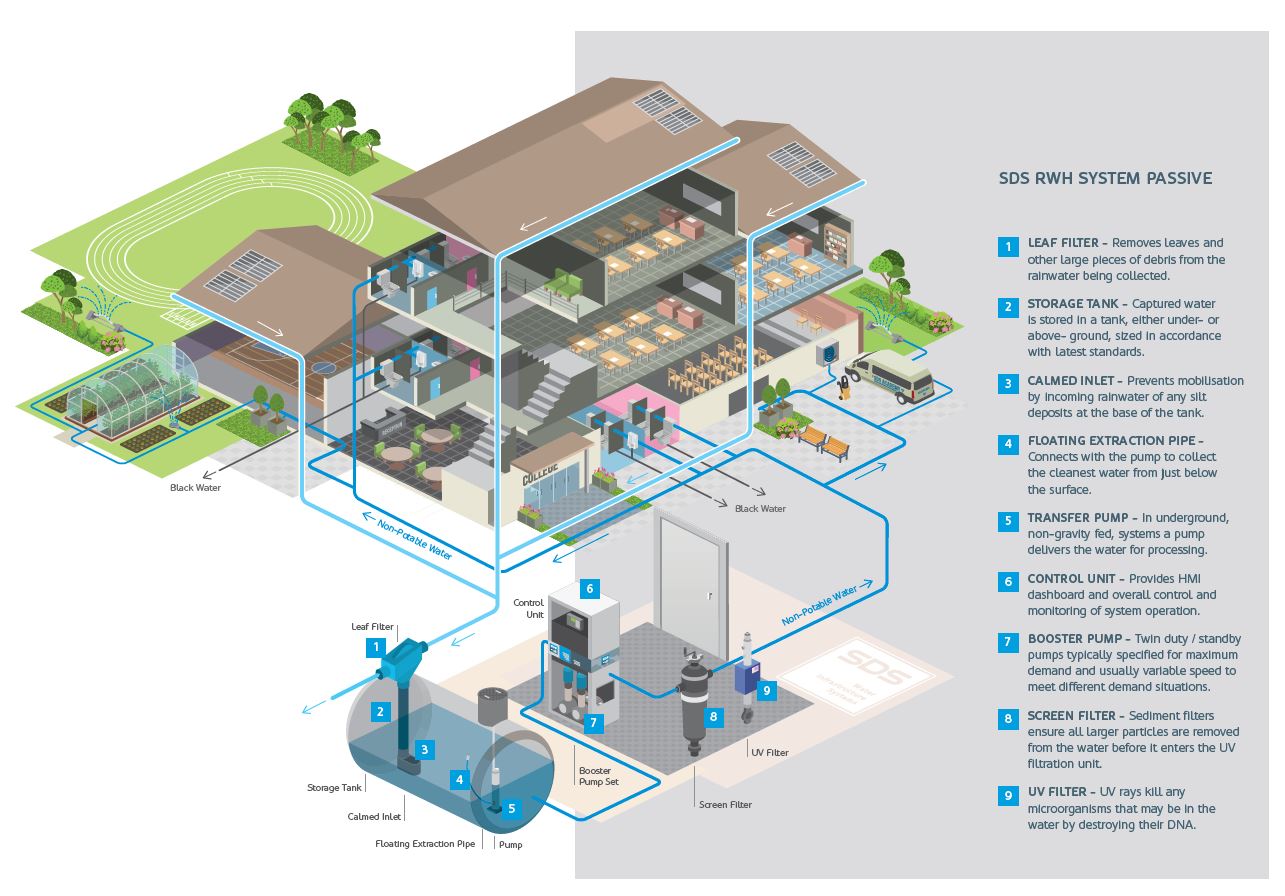Rainwater Recycling is the collection, storage and reuse of rainwater that typically would otherwise flow down gutters into the drainage network. SDS commercial and domestic rainwater recycling systems are able to reduce consumption and improve efficiency of water use, saving money, enhancing corporate sustainability and protecting the local environment, as well as reducing both mains water consumption by up to 30% and also the building’s carbon footprint.
Rainwater recycling can be incorporated into new build developments and properties, such as at London’s Southbank Place, and retrofitted to existing buildings where there is sufficient roof space to capture rainwater.
How does it work?
SDS ‘WaterBank’ Rainwater Recycling systems’ control software incorporates a level sensor which ensures rainwater is prioritised as the primary water source. An integral AA-rated break tank ensures a constant water supply is achieved by intelligently switching to mains water when rainwater is unavailable.
By assessing the site’s geographic and infrastructure suitability, we can design and install a bespoke system to collect and filter rainwater, feeding it back into the property through a simple yet robust treatment system. This ensures that only the cleanest, soft water is utilised for non-potable purposes such as flushing toilets, vehicle washing and irrigation.
By combining rainwater and grey water recycling in a joint system, such as at London’s Southbank Place, greater demands for sustainable water supply, both on- and off- site, can be met.
To enable a system to be designed, an understanding of the roof size, volume of water consumed on site and potential use of the captured rainwater is required. Due to the volume of roof area and water required, rainwater recycling is most often adopted by schools, retail outlets, distribution centres or large commercial buildings. Its benefits are greatest, and the payback period minimised, in geographical areas with both historically high rainfall and high water supply charges.
Domestic rainwater recycling systems are normally installed where the additional benefit of diverting surface rainwater away from the otherwise overloaded drainage systems can be deployed, thereby reducing the potential for flooding. They are, therefore, most typically retrofitted to existing single residential properties or, in a community-wide scheme, multiple properties.
The diagram below represents our WaterBank RWR system in a school environment.
FEATURES & BENEFITS
Can be partnered with above- and below-ground rainwater storage and Cat 5 water tanks.
Suitable for a diverse range of applications.
Compatible with above- or below- ground installations.
Provides flexible usage.
Tiered redundancy system allows two mains water backups, operating on separate power supplies.
Ensures supply of water even in the event of system component failure.
Controller is supplied from a submersible pump located within the rainwater storage tank.
Ensures that the bulk of the stored water is kept in cool conditions.
Bespoke pump sizes available on request.
Increases or decreases the amount of water supplied.
Low energy pumping.
Reduces running cost and carbon footprint.
Optional sub-metering and automated meter reading via telemetry system.
Provides client access 24/7 to accurate rainwater and mains water usage.
Remote production volume monitoring available as an optional extra.
Provides access 24/7 to rainwater recycling data via SDS SYMBiotIC™ web-based client portal.
Connection via GSM signal to predictive weather forecasting optional.
Automates control of tank water levels to optimise water reuse efficiency.
RECENT CASE STUDIES
Contact us to find out how our Rainwater Recycling solutions can benefit your business.






